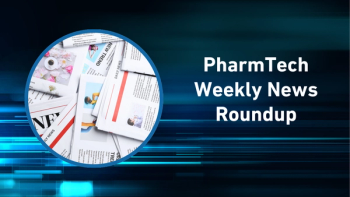
Industry Expert Panel Weighs CNPV Benefits, Risks, and Readiness: Part II
Key Takeaways
- The CNPV pilot program significantly reduces review times, but may challenge safety standards and resource allocation.
- On-shoring benefits include enhanced supply chain resilience and domestic manufacturing capacity, particularly for generics and biosimilars.
Five experts in the bio/pharmaceutical industry explore the FDA Commissioner’s National Priority Voucher (CNPV) pilot program.
Editor’s Note: Opinions expressed herein do not necessarily reflect those of the firms/companies for which the speakers work.
Access
Check out additional coverage and industry expert perspectives in "
And check out "
In mid-November 2025, PharmTech Group held a discussion with six bio/pharmaceutical industry experts to better understand the impacts—both known and potential—of the FDA Commissioner’s National Priority Voucher (CNPV) pilot program (1). The program offers an "unprecedented opportunity to reduce drug and biological product application or efficacy supplement review times from 10-12 months to just 1-2 months" (2,3). While FDA Commissioner Marty Makary, MD, MPH, called CNPV a “common-sense approach” that harnesses a "tumor board style" discussion to deliver "more cures and meaningful treatments to the American public” (3), experts in public health and regulatory policy (1,4-6), warn that this acceleration may come at the expense of established safety standards and fiscal responsibility. Following is a recap of the second half of the discussion, moderated by Eric Langer, president and managing partner, BioPlan Associates.
Langer: Is CNPV a gimmick that will get bogged down in process complexity
Aloka Srinivasan, principal and managing partner at Raaha LLC: Priority vouchers have been issued by FDA for a long time, mostly for rare pediatric diseases. This is just an extension of the process. FDA has a process in place that they can now expand to include on-shored drugs with unmet needs. I feel innovator companies that have submitted new chemical entities to [various regulatory agencies] will be able to navigate this process. However, the generic companies, who are usually not used to communicating with the Agency to the extent that new drug sponsors do, will now need to change their mindset and be ready to do so. They will also need to understand the significance of rolling submissions, which means that the product and process development work and the review go on parallelly. It is definitely not a gimmick, but the process may feel complex to sponsors who are not used to working under this paradigm. Again, like priority reviews, we will know if this is beneficial only when the process is initiated by submission of a few dossiers for the selected products.
Henrik Johanning, senior vice president, Quality & Strategy, Epista Life Science: No. It’s a very focused pilot, not a bureaucracy trap nor window dressing. FDA has built a dedicated, cross-functional “rapid review” team and front-loads CMC and labeling work to exactly avoid hand-offs. It’s speed for ready programs, not a shortcut around quality.
Langer: Where’s the on-shoring benefit?
Srinivasan: The on-shoring benefit is especially high for generics and biosimilars. They will now get significant opportunities to communicate with FDA prior to their submissions. In case of generics that are non-complex, this is a rare luxury, as sponsors of such products have very few ways of communicating with the Agency prior to submission. The Generic Drug User Fee Amendments (7) allows controlled correspondences, which are cumbersome and time consuming, and sometime FDA responses generate more questions and answers. Most of the communications for generics happen post-submission, through information requests, discipline review letters, and sometimes complete response letters… Based on the voucher, the sponsor will get numerous opportunities to discuss the product and process with the Agency prior to submission of the dossier, and the expectation is that by the time they submit the dossier, hopefully most of the issues have been resolved.
Johanning: On-shoring is one of the explicit selection criteria. FDA uses the program to steer advanced manufacturing, especially sterile injectables and biologics, back to the US. This is to strengthen supply-chain resilience, but also to rebuild domestic pharmaceutical capacity after decades of off-shoring to Asia and Eastern Europe. The program aims to:
- Reduce strategic dependency on single-region, non-US suppliers for APIs and sterile products.
- Safeguard, protect, and “grow" critical manufacturing know-how in areas such as biologics, cell therapies, and advanced aseptic systems.
- Encourage modernization, using US-based continuous-manufacturing or single-use technologies.
- Enhance regulatory agility, as US-based facilities are easier for FDA to inspect, monitor, and support during scale-up or remediation.
- Drive economic return, supporting domestic biomanufacturing jobs and infrastructure in alignment with broader US industrial policy.
So, the on-shoring benefit is not just resilience. It’s a strategic rebalancing of where, as well as how, medicines are made.
Langer: What if someone manufactures under this approach and sells their approval?
Johanning: That can’t happen. The vouchers are non-transferable. They are tied to the specific product and sponsor. Even if ownership changes, FDA oversight and tech-transfer obligations remain.
Langer: What about other preclinical drugs that lose out because they didn’t “win?”
Johanning: They retain full access to the well-established expedited pathways (Fast Track, Breakthrough, Priority Review, Accelerated Approval). The voucher simply adds one more lane for highly mature, strategically aligned programs.
Langer: Can FDA really review in 4 weeks?
Johanning: Sometimes. If the dossier is complete and clean. The 4-8-week target assumes pre-submission review and flawless CMC. FDA can extend the window when complexity demands it.
Rory Budihandojo, independent good manufacturing practices consultant: It is not clear logistically how the FDA can provide resources needed for this short/intense review without impacting other FDA review programs (e.g., may divert resources from FDA’s regular standard review program to this expedited review program). Thus, it may also impact therapies that are currently under review, including the potential of resource allocation from FDA’s other priority review programs, such as the Priority Review Voucher (PRV), which expedite the review to 6 months instead of 10 months.
Another suggestion is for FDA to work with other regulatory authorities (e.g., MHRA) in doing the review, leveraging other resources and trying to harmonize the intra-agencies’ review processes, similar to FDA’s mutual recognition program in leveraging facility inspection of other agencies. Although, the style of FDA inspection might be different than that of the other agency (for example, typically an MHRA inspector has industrial experience, while some FDA inspectors may not have industry experience or a science degree, which is kind of like “knowing how to read about driving the car doesn’t necessarily mean the person can drive the car”).
References
- FDA.
Commissioner's National Priority Voucher (CNPV) Pilot Program . Accessed Nov 18, 2025. - Dorsey, D; Holland, S.
A Tale of Three Vouchers . BHFS.com. Sept 29, 2025. - FDA.
Commissioner's National Priority Voucher (CNPV) Pilot Program . Accessed Nov 18, 2025. - Doctors for America.
FDA Commissioner’s National Priority Vouchers Will Endanger Americans . Press Release. June 20, 2025. - Eglovitchm, J.
Questions Remain as FDA Opens Submissions for New Priority Voucher Program . RAPS.org. July 24, 2025. - Emond, S; Ollendorf, D.
How to Make One Line in the FDA Commissioner's New Drug Review Program Into a Force for Affordable Access for Patients . Health Aff Sch. 2025;3(10):qxaf182. - FDA.
Generic Drug User Fee Amendments . Accessed Nov 21, 2025.
Newsletter
Get the essential updates shaping the future of pharma manufacturing and compliance—subscribe today to Pharmaceutical Technology and never miss a breakthrough.





